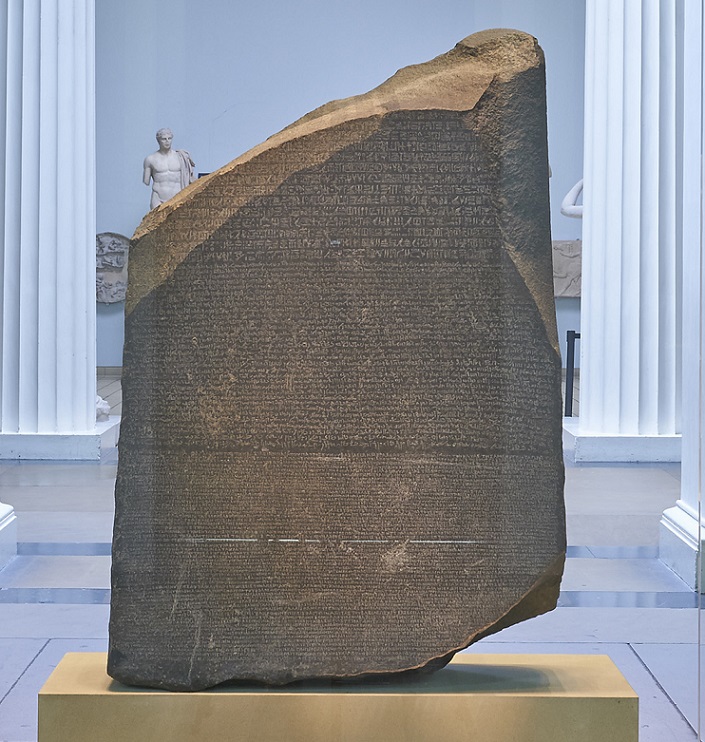
One of the most important finds of Egyptian archaeology, it was the decipherment of the inscriptions on the stone that led to the understanding of heiroglyphic writing.

The Rosetta Stone is black basalt (a volcanic rock) in composition, irregualarly fragmented in antiquity and measuring 1.14x0.72 m in size. It is named after the town Rosetta (modern Rushid) on the western end of the Nile delta, Egypt, near where it was found in 1799. It is now on permanent disply in the British Museum, London.
The inscriptions, summarizing the benefactions conferred by Antiochus IV Epiphanes, are written in two languages, Greek and Egyptian, the latter in two different scripts, hieroglyphic and demotic. Until its decipherment, understanding of hieroglyphic had been lost. The task of deciphering the inscriptions was begun by an English scholar, Thomas Young, and completed by the French archaeologist Jean-Francois Champollion; their work opened the way for the translations all Egyptian hieroglyphic writings and, subsequently, a firm foundation from which to rediscovering the historical richess of ancient Egypt.

Further Reading:
Leslie Adkins and Roy Adkins, The Keys of Egypt: The Race to Read the Hieroglyphs. London: HarperCollins, 2000.
John Ray, The Rosetta Stone and the Rebirth of Ancient Egypt. Cambridge, MA: Harvard University Press, 2007.

©ALBERITH